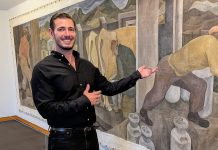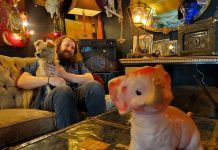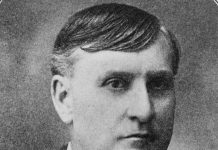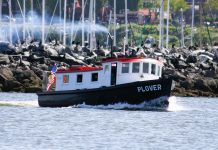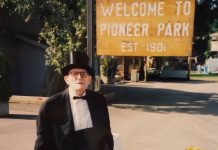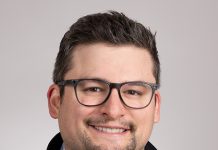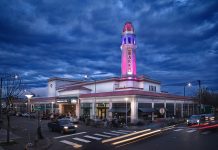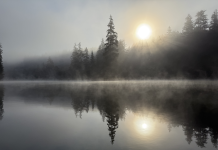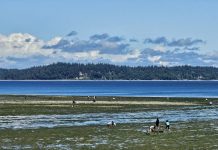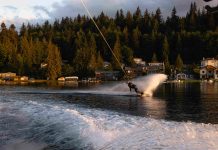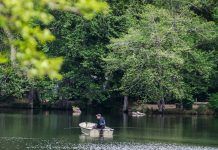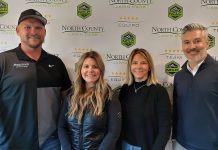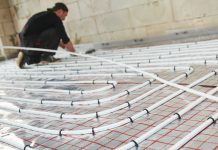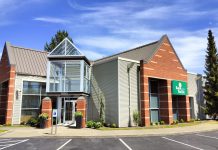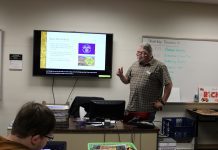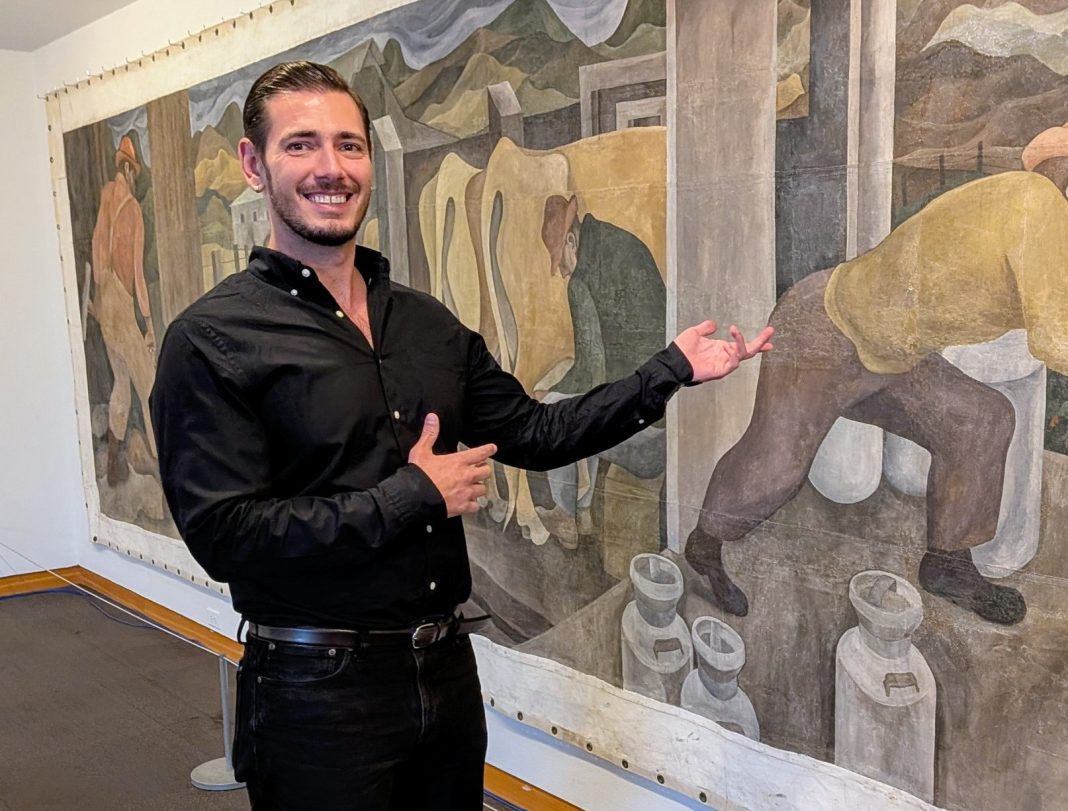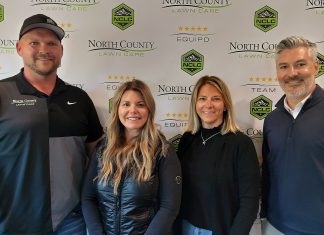Museum curators wear many hats, in part depending upon the size of the museum in which they work. The Whatcom Museum, the Skagit County Historical Museum, and the Museum of Northwest Art (MoNA) are examples of where the one word, curator, may not cover everything involved, from inspiration to the opening of an exhibition.
The Whatcom Museum is a campus of three buildings, including the old City Hall, with its distinctive red brick Victorian profile, the Lightcatcher, a block away with its soaring carved glass wall, and Old Fire Station No. 1, housing 200,000 plus images in an extensive Pacific Northwest photo archive. Both permanent and rotating exhibitions are displayed in Old City Hall and the Lightcatcher.
Integrating the exhibitions becomes, as chief curator Amy Chaloupka puts it, part of a larger conversation. “I’m in dialogue with our team for a long time,” she says, from registrar to the people hanging the artwork. The exhibition is also a conversation with the public. With each exhibit, she considers other programming that will be happening at the same time, including history projects, educational initiatives, and what might be timely in the world.
Christian Waguespack, who recently assumed the role of Director of Curatorial Affairs and Curator of Northwest Art at MoNA (Museum of Northwest Art) in La Conner, also looks at the broad scope. “I think it’s very important to put together exhibitions that are relevant, and that are also accessible and relatable to most anybody who’ll come through the museum,” he notes. “They need to be interesting, they need to be educational, and they need to touch people in a particular kind of way that goes past just the didactic.”
“An exhibition needs to be more than the sum of its individual parts,” he continues, “so it’s not just a selection of ten paintings that are hung together. They need to bring a more powerful experience than what any one work would do on its own. I think that that’s part of the alchemy and magic of being a curator: creating something more than just those individual pieces.”
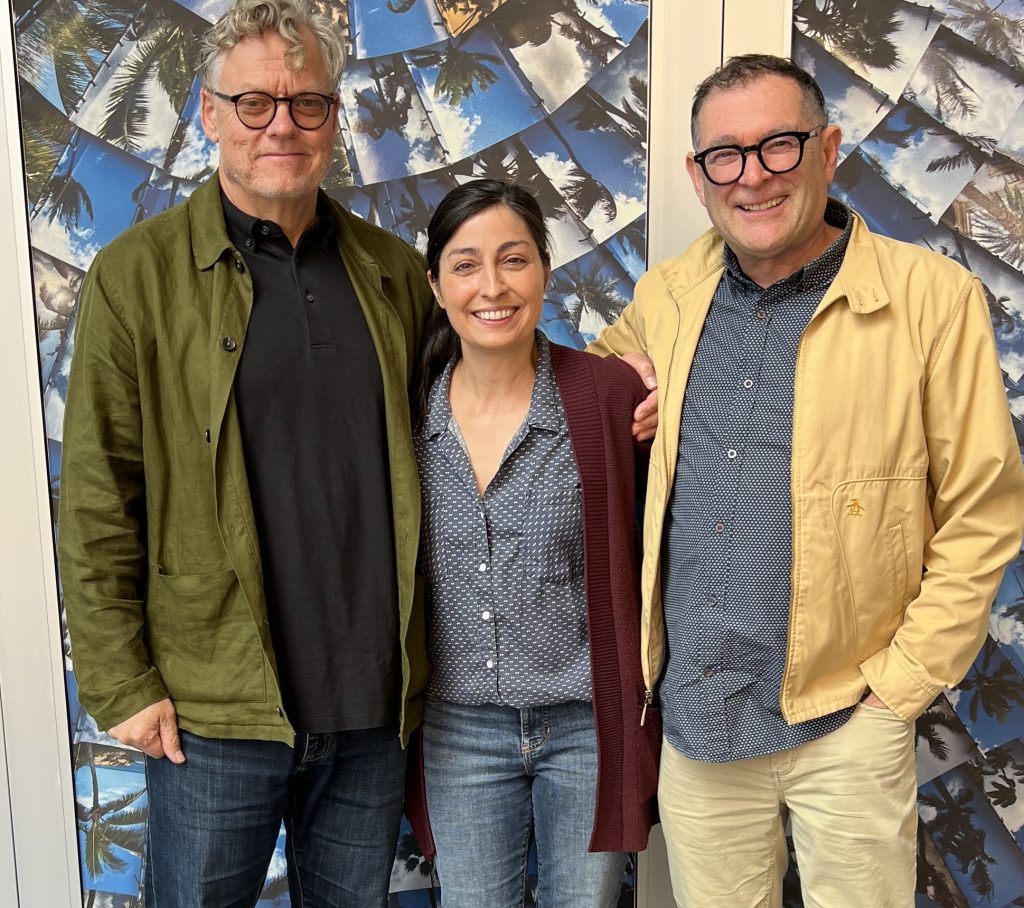
What it Takes to Open a New Museum Exhibition
The work begins years ahead of opening the doors of a new exhibition.
“I’m looking at things all the time, says Chaloupka, “and a little bit of my job is being open and curious, going to art fairs, doing studio visits, having conversations with artists I know but also artists I haven’t worked with yet. I want to understand what they are responding to and what’s going on in the art world and the greater world. I’m thinking about all of that, all the time.”
Once a concept is in place and she’s created a budget, it enters the museum approval process and, when she gets the go-ahead, Chaloupka puts on her project management cap in earnest. First comes the checklist, in the form of an extensive spreadsheet, which may have only three pieces of art as with “Verdant: French Masterworks from the National Gallery of Art,” featuring paintings by Henri Matisse, Paul Cézanne, and Auguste Renoir on long-term loan to the Whatcom Museum; or, a recent Thomas Wood exhibition that had approximately 300 objects.
A typical entry will include a thumbnail of the art, the title, date of the work, the media in which it was created, the dimensions, where it is physically, whose collection it is in, and the collector’s contact information. Rights and availability have to be determined for each piece. It takes months to assemble the checklist, and only after that is finalized can Chaloupka begin to look at the dimensions of the gallery and think about how the pieces will fit.
A Symphony of Processes
As these details are beginning to fall into place, the curator starts to think about the descriptions of the objects, whether there will be a catalogue, and what the marketing materials will look like.
Many of the 35,000 museums in America likely have a small staff with a huge responsibility to perform every function of mounting an exhibition. Their skills may have come from having worked at different jobs within the museum universe, or even as teachers or artists themselves, sometimes leading to jobs as museum curators eventually.
“It is a symphony of processes,” Chaloupka says, and it requires a team of people who work on where the pieces will be picked up, what crating will be necessary, how the pieces will get into the building, and what furniture might have to be built to display the artwork. That is in addition to the decisions about where to place the artwork, educational programs that might accompany the exhibition, and outreach to the public.
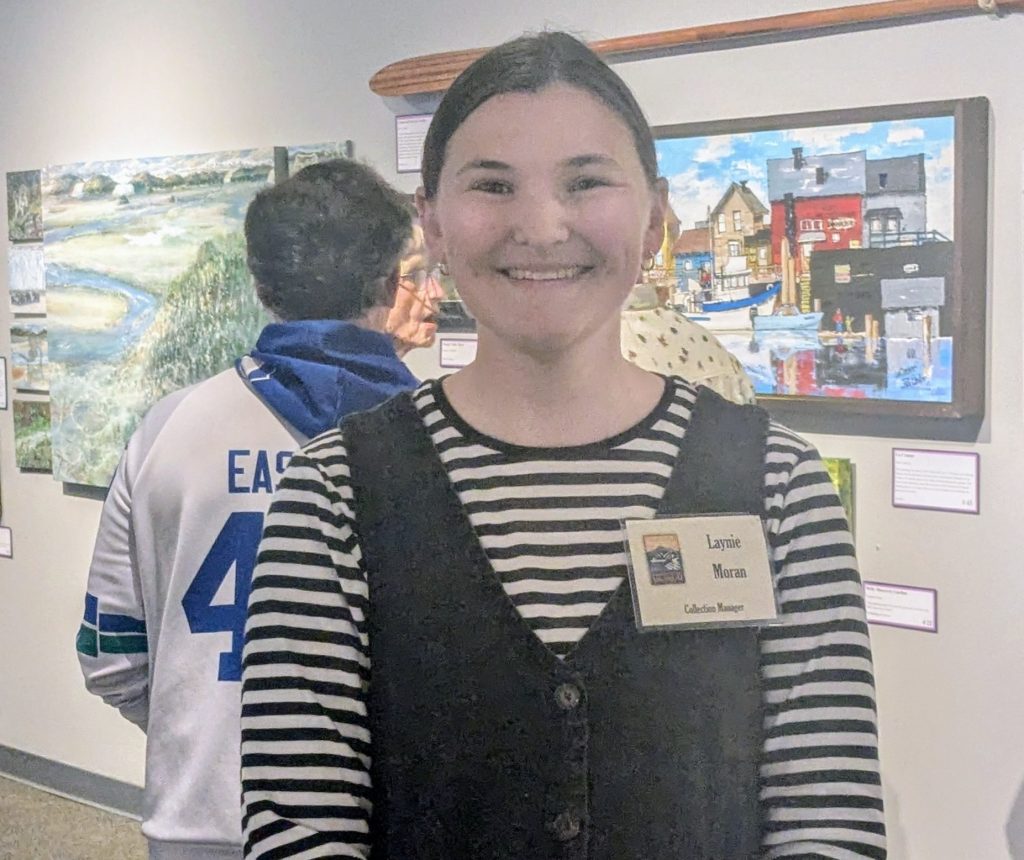
Different Strokes For Different Museums
In neighboring Skagit County, the smaller campus of the Skagit County Historical Museum, sitting high on a hill in La Conner, takes a slightly different approach to mounting shows. Its mission, to preserve Skagit history for all time and all ages, also relies on meticulous collection techniques to document and archive that history. As such, there is no curator, per se, so staff members share the role, rotating with the exhibitions.
Laynie Moran, collections manager, has curated the current show, “Everyone’s A Critic.” “I wanted to see other people’s art, people who are not famous artists from the county. It’s hard to be an artist and get exposure these days,” she says, “so I wanted to give them the opportunity to be displayed in a museum.”
There are 103 objects showcasing Skagit County in various mediums, featuring artists of all ages, from children to older adults. Moran worked on the exhibition for two years from concept to execution with the same objectives as curators everywhere: “to tell a story, guide the viewer through a topic in a digestible way,” she says
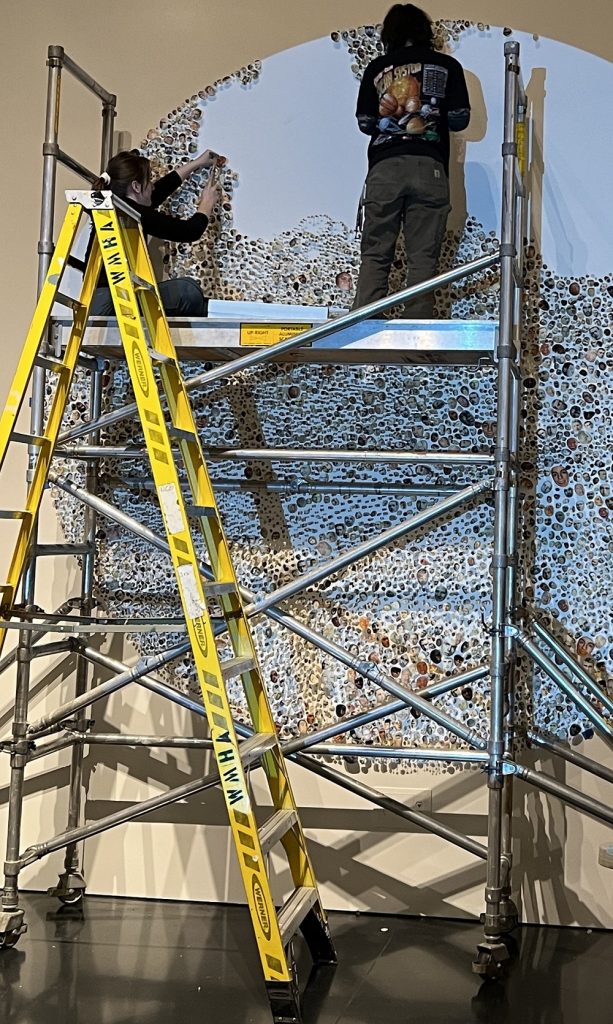
Photo courtesy: Whatcom Museum
The Path of a Museum Curator
The curator’s role is complex and, consequently, interesting. The path to curation is often circuitous. At major museums like The Metropolitan, The Louvre, and The Brooklyn Museum, for instance, curators frequently bring pedigrees in a particular period of art. They are likely to be art historians with specializations in disciplines like Egyptology, Renaissance, modern art, or period furniture.
According to the American Alliance of Museums, there are approximately 150 museum studies programs in colleges and universities in the U.S., half of them at the master’s level. As part of her role as Associate Professor of Art and Museum Education at Western Washington University, Dr. Ashley Mask supervises an internship that gives students a year-long opportunity to work in different capacities within a museum. “Learning the practicalities of working in museums and realizing that even if you’re interning in collections, helping out at First Friday events, assisting with educational tours for students, you are getting great training,” says Mask.
The internship program at Western includes collaborations with the Whatcom Museum, the Western Gallery on campus, and, new this year, the Jansen Art Center. Not only do interns benefit from being mentored, but they also play a crucial role in supporting the efforts required to mount a show.
Laynie Moran’s route was to secure a bachelor’s degree in history from Central Washington University with a plan to teach history. Her museum studies minor led to a job with the Olmstead Place Historical State Park, preserving the history of homesteading and farming in Ellensburg. When she moved to the Skagit County Historical Museum, she discovered a passion for collections work.
Amy Chaloupka went to school at the University of Wisconsin-Madison and has a Master of Fine Arts in sculpture. Her educational and professional background, and experience with large pieces in public spaces, stand her in good stead at the Whatcom Museum.
Christian Waguespack, originally from Louisiana, holds degrees in art history, museum studies, and administration from the University of New Mexico. He always knew he wanted to work in a museum. “I remember once, as a kid, that we were having a hurricane and the power went out. To entertain myself, I got a notebook and a crayon and went around and made museum labels for all the art in my grandmother’s house.”
He went on to study, intern, and work on staff at galleries and museums, and teach in New Mexico for 15 years before joining MoNA.
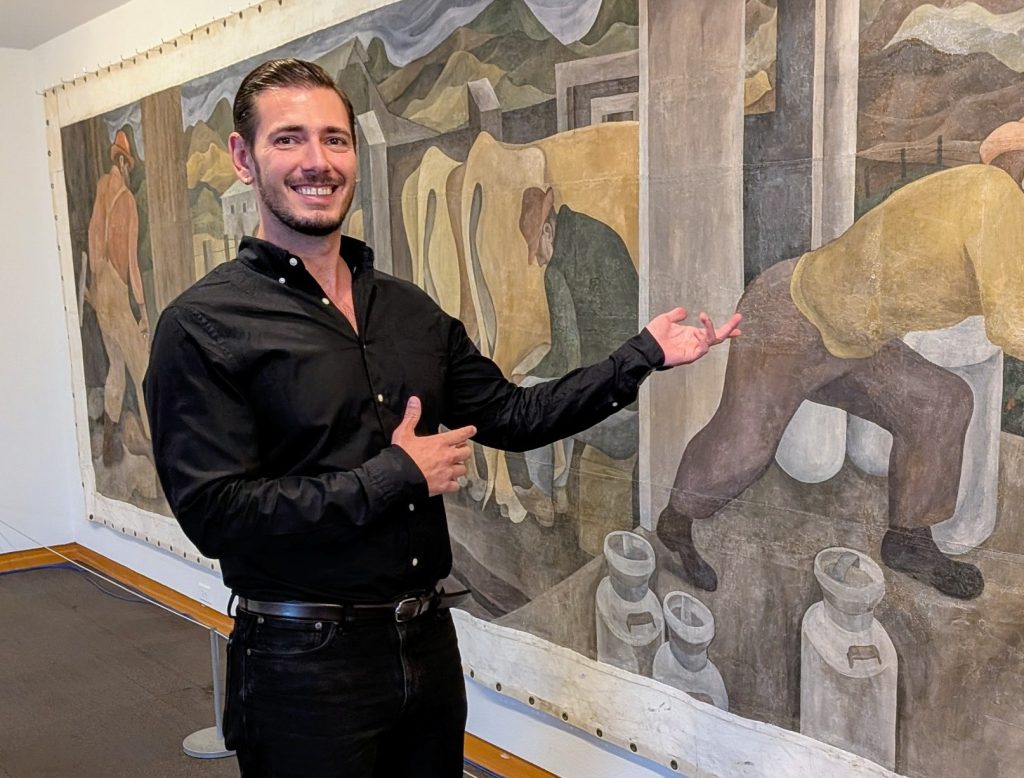
Each of these curators has a devotion to what they are doing.
“It’s the saddest day when we have to pack the shows,” says Chaloupka. “This is never going to exist again, in this space. All the hours, weeks, months, and years of preparation, talking to people, sharing with the public, and bringing something to life are worth it. I am just so fortunate to get to do this job that’s different every time,” she adds, “I get attached.”
Visit Whatcom Museum. In Old City Hall, “El velo exquisito / The Exquisite Veil” by Alfredo Arreguín runs through August 24, and “A Pull to the Pacific: West Coast Lithography of the New Deal Era” is on view through September 28. In the Lightcatcher building, “Verdant: French Masterworks from the National Gallery of Art” is on view through 2026. “Myself Inside Your Story” by Mary Ann Peters and “Meander” by Io Palmer will be on view from August 16 through January 25, 2026.
Visit the Skagit County Historical Museum, where “Everyone’s A Critic” is on view until November 30, 2025.
Visit MoNA, where admission is free. The current exhibition, “Through the Light: The Sublime in Contemporary Northwest Art,” runs through September 28, 2025

